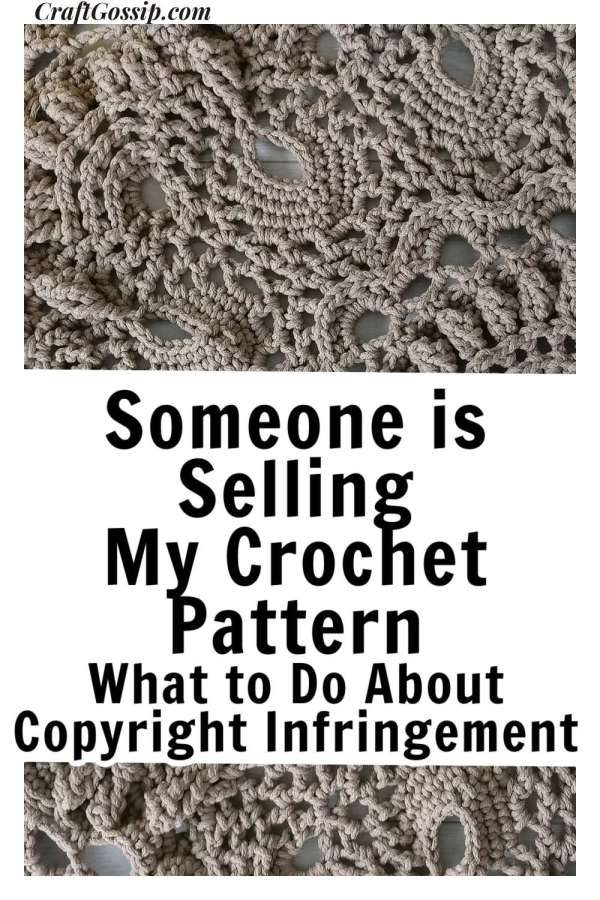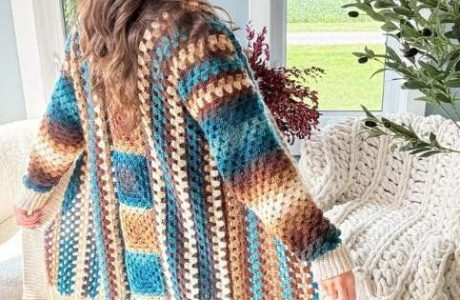
Discovering that someone is profiting from your hard work and creativity by selling your crochet pattern without your consent can be an incredibly frustrating and disheartening experience. As a dedicated crochet pattern designer, you invest countless hours in crafting unique and innovative designs that reflect your passion and expertise. In this digital age, where information spreads quickly and boundaries can blur, it’s vital to be equipped with the knowledge and tools to safeguard your intellectual property.
Understanding and protecting your copyright is not just a legal necessity; it’s a way to honor your creative efforts and ensure that you have full control over how your patterns are distributed and used. Copyright grants you exclusive rights to reproduce, distribute, and sell your original work, giving you the authority to decide who can benefit from your designs. However, when unauthorized individuals or entities start selling your patterns, it can not only diminish the value of your work but also impact your livelihood.
In this article, we’ll provide you with a comprehensive step-by-step guide on how to respond if you find that someone is selling your crochet pattern without your permission. From understanding copyright basics to taking appropriate legal actions, we’ll walk you through the necessary steps to address copyright infringement effectively. By staying informed and proactive, you can navigate the challenges of copyright infringement and uphold the integrity of your creative endeavors. Your dedication to protecting your crochet patterns is not only a testament to your commitment as a designer but also a way to foster a thriving and respectful crochet community.
1. Understand Copyright Basics
Educate yourself about copyright law and how it applies to your crochet patterns. Copyright gives you exclusive rights to your original work, including the right to reproduce, distribute, and sell it.
When you create a crochet pattern, you automatically hold the copyright to that pattern as soon as it’s created and fixed in a tangible form, such as writing it down or creating a digital file. This gives you exclusive rights to control how your pattern is used, distributed, reproduced, and sold. Here’s a breakdown of copyright law as it applies to crochet patterns:
Exclusive Rights: Copyright grants you a bundle of exclusive rights, including the right to reproduce the pattern, distribute copies, create derivative works (such as translations or adaptations), and publicly display or perform the pattern. These rights are not absolute and can be limited by factors like fair use.
Originality: To be eligible for copyright protection, your crochet pattern must be original and contain a certain level of creativity. This means that the pattern must reflect your unique choices, arrangement, and instructions rather than being a common technique or idea.
Tangible Form: Copyright protection does not extend to ideas, concepts, or methods. It applies to the tangible expression of those ideas, which in the case of crochet patterns, means the written instructions, charts, diagrams, and other forms in which the pattern is fixed.
Registration: While copyright protection is automatic upon creation, registering your crochet pattern with the copyright office offers additional benefits. Registration provides a public record of your copyright and allows you to pursue legal action for infringement.
Duration: Copyright protection generally lasts for the life of the author plus 70 years. After this period, the pattern enters the public domain and can be used by anyone without permission.
Fair Use: Copyright law includes the doctrine of “fair use,” which allows limited use of copyrighted material without permission for purposes such as criticism, comment, news reporting, teaching, scholarship, or research. However, fair use is a complex legal concept and can vary depending on the circumstances.
Infringement: If someone uses, reproduces, distributes, or sells your crochet pattern without your permission, it constitutes copyright infringement. As the copyright holder, you have the right to take legal action to stop the infringement and seek damages.
International Protection: Copyright protection is generally territorial, meaning it applies within the borders of a specific country. However, international treaties like the Berne Convention establish minimum standards of protection among member countries.
In summary, copyright law provides crochet designers with the legal framework to protect their original pattern designs. By understanding copyright basics, designers can assert their rights, prevent unauthorized use, and ensure that their creative efforts are respected and acknowledged in the crochet community.
2. Gather Evidence
Collect evidence of the infringement. Take screenshots of the unauthorized sales or links to the listings on various platforms. Documentation is key when addressing copyright violations.
3. Contact the Seller
Reach out to the individual or business selling your pattern without permission. Politely inform them about the infringement and request that they remove the listing and stop selling your pattern.
4. Send a Cease and Desist Letter
If the seller doesn’t respond or refuses to cooperate, consider sending a formal cease and desist letter. This letter outlines your copyright ownership and demands the immediate removal of the infringing content.
5. Report to Online Platforms
If the infringement occurs on an online marketplace like Etsy, Amazon, or Ravelry, report the issue to the platform. Provide evidence of your copyright ownership and the infringement.
6. Consult Legal Advice
If the situation escalates and the infringing party persists, consult an attorney experienced in intellectual property law. They can guide you through legal actions if necessary.
7. Protect Your Work
Consider watermarking your digital crochet patterns with your logo or brand name. Additionally, clearly state the terms of use and distribution in your patterns.
8. Monitor Online Platforms
Regularly search for your patterns on various online platforms to identify any potential infringements. Addressing them promptly can prevent further unauthorized sales.
9. Stay Educated
Stay updated on copyright laws and best practices for protecting your intellectual property. Websites like Littlejohn’s Yarn and Crochetpreneur offer valuable insights.
Remember, protecting your crochet patterns is essential for preserving your creativity and hard work. While addressing copyright infringement can be challenging, taking proactive steps will help you maintain control over your designs and creations.
Below we have provided a copy and paste of Cease and Desist Letter that you can use and amend to suit your needs.
————
[Your Name] [Your Address] [City, State, ZIP] [Email Address] [Phone Number] [Date]
[Recipient’s Name] [Recipient’s Address] [City, State, ZIP]
Subject: Cease and Desist – Copyright Infringement of Crochet Pattern
Dear [Recipient’s Name],
I am writing to bring to your attention a serious matter regarding the unauthorized use of my copyrighted crochet pattern, titled “[Crochet Pattern Title],” which I hold the exclusive rights to under copyright registration [Copyright Registration Number], issued by the [Copyright Office Name]. It has come to my attention that you have been reproducing, distributing, and selling my copyrighted pattern without obtaining proper authorization or a valid license to do so.
This action constitutes a clear violation of my intellectual property rights and is a breach of copyright law. As the copyright holder, I insist that you immediately cease and desist from all further use, reproduction, distribution, sale, or any other form of unauthorized exploitation of my copyrighted crochet pattern.
I demand that you:
- Cease any further reproduction, distribution, sale, or use of my copyrighted crochet pattern, “[Crochet Pattern Title],” in any form or medium.
- Provide me with a written assurance within [Specify Deadline, e.g., 10 business days] that you have complied with my demands and will refrain from any future infringement.
- Immediately remove any listings, advertisements, or materials related to the infringing crochet pattern from all platforms, websites, or other mediums.
- Provide an account of all financial gains derived from the unauthorized use of my copyrighted pattern and compensate me for the damages incurred.
Failure to comply with these demands within the specified deadline will leave me with no choice but to pursue legal action to protect my copyright and seek damages for the infringement. Please be aware that copyright infringement can result in severe penalties, including monetary damages and legal costs.
I sincerely hope it will not be necessary to escalate this matter further. I strongly urge you to rectify this situation promptly and responsibly.
To confirm your understanding and compliance with my demands, kindly sign and return a copy of this letter within [Specify Deadline for Response, e.g., 7 business days]. Your immediate attention to this matter is expected.
This letter is not intended to be a complete or exhaustive statement of my rights, legal or otherwise, in connection with the subject matter. All rights are expressly reserved.
Sincerely,
[Your Full Name] [Your Signature – if sending a physical copy] [Enclosures – If any, such as copyright registration certificate] [CC: Your Attorney’s Information – If applicable]
This article is written as guide only, for legal advice contact your attorney.




Leave a Reply